
DOC026.98.80501
AS950 Refrigerated Sampler
AS950 AWRS
12/2017, Edition 5
Basic Installation and Maintenance
Grundlegende Installation und Wartung
Installazione e manutenzione base
Installation et maintenance de base
Instalación y mantenimiento básicos
Instalação e Manutenção Básica
Základní instalace a údržba
Basisinstallatie en -onderhoud
Podstawy montażu i serwisowania
Grundläggande Installation och Underhåll
Основно инсталиране и поддръжка
Alapvető felszerelés és karbantartás
Instalare şi întreţinere de bază
Первичная установка и техническое обслуживание
Temel Kurulum ve Bakım
Základná inštalácia a údržba
Osnovna namestitev in vzdrževanje
Basic Installation and Maintenance
Βασική εγκατάσταση και συντήρηση

English..............................................................................................................................3
Deutsch.......................................................................................................................... 27
Italiano............................................................................................................................ 53
Français......................................................................................................................... 78
Español........................................................................................................................ 103
Português.................................................................................................................... 128
Čeština......................................................................................................................... 153
Nederlands................................................................................................................. 177
Polski............................................................................................................................ 202
Svenska....................................................................................................................... 227
български................................................................................................................... 251
Magyar......................................................................................................................... 277
Română....................................................................................................................... 301
Русский........................................................................................................................326
Türkçe...........................................................................................................................354
Slovenský jazyk......................................................................................................... 378
Slovenski..................................................................................................................... 403
Hrvatski........................................................................................................................ 427
Ελληνικά...................................................................................................................... 452
2

Table of contents
Specifications on page 3 Startup on page 18
General information on page 6 Maintenance on page 19
Installation on page 10 Troubleshooting on page 25
Additional information
Additional information is available on the manufacturer's website.
Specifications
Specifications are subject to change without notice.
Refrigerated Sampler and All Weather Refrigerated Sampler (AWRS)
Specification Refrigerated Sampler AWRS
Dimensions (W x D x
H)
1
61 x 61 x 112 cm (24 x 24 x 44 in.) 76 x 81 x 130 cm (30 x 32 x 51 in.)
Weight 63.3 kg (140 lb) 86 kg (190 lb)
Power requirements
(includes compressor)
115 VAC, 60 Hz, 3.3 A (18 locked
rotor amps)
230 VAC, 50 Hz, 1.7 A (9 locked rotor
amps)
115 VAC, 60 Hz, 4.2 A or 6.4 A with controller
compartment heater
230 VAC, 50 Hz, 2.7 A or 4.1 A with controller
compartment heater
Overload protection Thermal overload relay, opens at
100 to 110 °C (212 to 230 °F)
115 VAC: 7.5 A circuit breaker
230 VAC: 5.0 A circuit breaker
Compressor
1
/
6
HP
1
/
5
HP
115 VAC: 115 °C (239 °F) thermal overload
protector, 7.1 locked rotor amps
230 VAC: 120 °C (248 °F) thermal overload
protector, 7.6 A peak start current
Operating temperature 0 to 50 °C (32 to 122 °F) 0 to 50 °C (32 to 122 °F); with AC battery
backup: 0 to 40 ºC (32 to 104 ºF); with
controller compartment heater: –40 to 50 °C
(–40 to 122 °F); with controller compartment
heater and AC battery backup: –15 to 40 ºC
(5 to 104 ºF)
Storage temperature –30 to 60 °C (–22 to 140 °F) –30 to 60 °C (–22 to 140 °F)
Relative humidity 0 to 95% 0 to 95%
Installation category,
pollution degree
II, 2 II, 2
Protection class I I
Temperature control 4 (±0.8) °C (39 (±1.5) °F) in ambient
temperatures at a maximum of 50 °C
(120 °F)
4 (±0.8) °C (39 (±1.5) °F)
2
1
Refer to Figure 1 on page 6 for the sampler dimensions.
2
Radio frequency interference in the 30 to 50 MHz range can cause a maximum temperature
change of 1.3 °C (34.3 °F). Adjust the set point temperature to 2 to 10 °C (35.6 to 50 °F) to
correct this interference.
English 3

Specification Refrigerated Sampler AWRS
Enclosure 22-gauge steel (optional stainless
steel) with vinyl laminate overcoat
IP24, low-density polyethylene with UV
inhibitor
Sample bottle capacity Single bottle: 10 L (2.5 gal) glass or polyethylene, or 21 L (5.5 gal) polyethylene
Multiple bottles: two 10 L (2.5 gal) polyethylene and/or glass, four 10 L (2.5 gal)
polyethylene and/or glass, eight 2.3 L (0.6 gal) polyethylene and/or 1.9 L (0.5 gal) glass,
twelve 2 L (0.5 gal) polyethylene (AWRS only), twenty-four 1 L (0.3 gal) polyethylene
and/or 350 mL (12 oz.) glass
Certifications AC power supply: cETLus, CE
AS950 controller
Specification Details
Dimensions (W x H x D) 31.1 x 18.9 x 26.4 cm (12.3 x 7.4 x 10.4 in.)
Weight 4.6 kg (10 lb) maximum
Enclosure PC/ABS blend, NEMA 6, IP68, corrosion and ice resistant
Pollution degree/installation
category
3, II
Protection class II
Display ¼ VGA, color
Power requirements Refrigerated sampler: 15 VDC supplied by a power supply (115 to 220 VAC,
50/60Hz); AWRS: 15 VDC supplied by an integral power supply
Overload protection 7 A, DC line fuse for the pump
Operating temperature 0 to 50 °C (32 to 122 °F); Refrigerated sampler: 0 to 49 °C (32 to 120 °F);
AWRS with controller compartment heater: –40 to 50 °C (–40 to 122 °F); AWRS
with controller compartment heater and AC battery backup: –15 to 40 °C (5 to
104 °F)
Storage temperature Refrigerated sampler: –40 to 60 °C (–40 to 140 °F); AWRS: –30 to 60 °C
(–22 to 140 °F)
Storage/operating humidity 100% condensing
Pump Peristaltic high speed with spring-mounted Nylatron rollers
Pump enclosure Polycarbonate cover
Pump tubing 9.5 mm ID x 15.9 OD mm (
3
/
8
-in. ID x
5
/
8
-in. OD) silicone
Pump tubing life 20,000 sample cycles with: 1 L (0.3 gal) sample volume, 1 rinse, 6-minute
pacing interval, 4.9 m (16 ft) of
3
/
8
-in. intake tube, 4.6 m (15 ft) of vertical lift,
21 °C (70 °F) sample temperature
Vertical sample lift 8.5 m (28 ft) for 8.8 m (29 ft) maximum of
3
/
8
-in. vinyl intake tube at sea level at
20 to 25 °C (68 to 77 °F)
Pump flow rate 4.8 L/min (1.25 gpm) at 1 m (3 ft) vertical lift with
3
/
8
-in. intake tube typical
Sample volume Programmable in 10-mL (0.34 oz) increments from 10 to 10,000 mL (3.38 oz to
2.6 gal)
Sample volume repeatability
(typical)
±5% of 200 mL sample volume with: 4.6 m (15 ft) vertical lift, 4.9 m (16 ft) of
3
/
8
-
in. vinyl intake tube, single bottle, full bottle shut-off at room temperature and
1524 m (5000 ft) elevation
4 English

Specification Details
Sample volume accuracy
(typical)
±5% of 200 mL sample volume with: 4.6 m (15 ft) vertical lift, 4.9 m (16 ft) of
3
/
8
-
in. vinyl intake tube, single bottle, full bottle shut-off at room temperature and
1524 m (5000 ft) elevation
Sampling modes Pacing: Fixed Time, Fixed Flow, Variable Time, Variable Flow, Event
Distribution: Samples per bottle, bottles per sample and time based (switching)
Run modes Continuous or non-continuous
Transfer velocity (typical) 0.9 m/s (2.9 ft/s) with: 4.6 m (15 ft) vertical lift, 4.9 m (16 ft) of
3
/
8
-in. vinyl intake
tubing, 21 °C (70 °F) and 1524 m (5000 ft) elevation
Liquid detector Ultrasonic. Body: Ultem
®
NSF ANSI standard 51 approved, USP Class VI
compliant. Contacting liquid detector or optional non-contact liquid detector
Air purge An air purge is done automatically before and after each sample. The sampler
automatically compensates for different intake tube lengths.
Tubing Intake tubing: 1.0 to 30.0 m (3.0 to 99 ft) length, ¼-in. or
3
/
8
-in. ID vinyl or
3
/
8
-in.
ID Teflon
™
-lined polyethylene with protective outer cover (black or clear)
Wetted materials Stainless steel, polyethylene, Teflon, Ultem, silicone
Memory Sample history: 4000 records; Data log: 325,000 records; Event log:
2000 records
Communications USB and optional RS485 (Modbus)
Electrical connections Power, auxiliary, optional sensors (2x), USB, distributor arm, optional rain
gauge, thermal (AWRS only)
Analog outputs AUX port: none; optional IO9000 module: Three 0/4–20 mA outputs to supply
the recorded measurements (e.g., level, velocity, flow and pH) to external
instruments
Analog inputs AUX port: One 0/4–20 mA input for flow pacing; optional IO9000 module: Two
0/4–20 mA inputs to receive measurements from external instruments (e.g.,
third-party ultrasonic level)
Digital outputs AUX port: none; optional IO9000 module: Four low voltage, contact closure
outputs that each supply a digital signal for an alarm event
Relays AUX port: none; optional IO9000 module: Four relays controlled by alarm
events
Certifications CE, cETLus
English 5

Figure 1 Refrigerated sampler and AWRS dimensions
General information
In no event will the manufacturer be liable for direct, indirect, special, incidental or consequential
damages resulting from any defect or omission in this manual. The manufacturer reserves the right to
make changes in this manual and the products it describes at any time, without notice or obligation.
Revised editions are found on the manufacturer’s website.
Safety information
N O T I C E
The manufacturer is not responsible for any damages due to misapplication or misuse of this product including,
without limitation, direct, incidental and consequential damages, and disclaims such damages to the full extent
permitted under applicable law. The user is solely responsible to identify critical application risks and install
appropriate mechanisms to protect processes during a possible equipment malfunction.
6 English

Please read this entire manual before unpacking, setting up or operating this equipment. Pay
attention to all danger and caution statements. Failure to do so could result in serious injury to the
operator or damage to the equipment.
Make sure that the protection provided by this equipment is not impaired. Do not use or install this
equipment in any manner other than that specified in this manual.
Use of hazard information
D A N G E R
Indicates a potentially or imminently hazardous situation which, if not avoided, will result in death or serious injury.
W A R N I N G
Indicates a potentially or imminently hazardous situation which, if not avoided, could result in death or serious
injury.
C A U T I O N
Indicates a potentially hazardous situation that may result in minor or moderate injury.
N O T I C E
Indicates a situation which, if not avoided, may cause damage to the instrument. Information that requires special
emphasis.
Precautionary labels
Read all labels and tags attached to the instrument. Personal injury or damage to the instrument
could occur if not observed. A symbol on the instrument is referenced in the manual with a
precautionary statement.
This is the safety alert symbol. Obey all safety messages that follow this symbol to avoid potential
injury. If on the instrument, refer to the instruction manual for operation or safety information.
This symbol indicates that a risk of electrical shock and/or electrocution exists.
This symbol indicates that a risk of fire is present.
This symbol indicates that the marked item can be hot and should not be touched without care.
This symbol indicates that the item is to be protected from fluid entry.
This symbol indicates that the marked item should not be touched.
This symbol indicates a potential pinch hazard.
English 7

This symbol indicates that the object is heavy.
This symbol indicates that the marked item requires a protective earth connection. If the instrument is
not supplied with a ground plug on a cord, make the protective earth connection to the protective
conductor terminal.
Electrical equipment marked with this symbol may not be disposed of in European domestic or public
disposal systems. Return old or end-of-life equipment to the manufacturer for disposal at no charge to
the user.
Certification
Canadian Radio Interference-Causing Equipment Regulation, IECS-003, Class A:
Supporting test records reside with the manufacturer.
This Class A digital apparatus meets all requirements of the Canadian Interference-Causing
Equipment Regulations.
Cet appareil numérique de classe A répond à toutes les exigences de la réglementation canadienne
sur les équipements provoquant des interférences.
FCC Part 15, Class "A" Limits
Supporting test records reside with the manufacturer. The device complies with Part 15 of the FCC
Rules. Operation is subject to the following conditions:
1. The equipment may not cause harmful interference.
2. The equipment must accept any interference received, including interference that may cause
undesired operation.
Changes or modifications to this equipment not expressly approved by the party responsible for
compliance could void the user's authority to operate the equipment. This equipment has been tested
and found to comply with the limits for a Class A digital device, pursuant to Part 15 of the FCC rules.
These limits are designed to provide reasonable protection against harmful interference when the
equipment is operated in a commercial environment. This equipment generates, uses and can
radiate radio frequency energy and, if not installed and used in accordance with the instruction
manual, may cause harmful interference to radio communications. Operation of this equipment in a
residential area is likely to cause harmful interference, in which case the user will be required to
correct the interference at their expense. The following techniques can be used to reduce
interference problems:
1. Disconnect the equipment from its power source to verify that it is or is not the source of the
interference.
2. If the equipment is connected to the same outlet as the device experiencing interference, connect
the equipment to a different outlet.
3. Move the equipment away from the device receiving the interference.
4. Reposition the receiving antenna for the device receiving the interference.
5. Try combinations of the above.
8
English

Product overview
D A N G E R
Chemical or biological hazards. If this instrument is used to monitor a treatment process and/or
chemical feed system for which there are regulatory limits and monitoring requirements related to
public health, public safety, food or beverage manufacture or processing, it is the responsibility of the
user of this instrument to know and abide by any applicable regulation and to have sufficient and
appropriate mechanisms in place for compliance with applicable regulations in the event of malfunction
of the instrument.
C A U T I O N
Fire hazard. This product is not designed for use with flammable liquids.
The sampler collects liquid samples at specified intervals and keeps the samples in a refrigerated
cabinet. Use the sampler for a wide variety of aqueous sample applications and also with toxic
pollutants and suspended solids. Refer to Figure 2.
Lockable cabinet door (AWRS only)
Push the round button in the center of the latch to open the door. Flip the latch to close the door tight.
Two keys are supplied for the door lock. Over time, it may be necessary to tighten the adjustment
screw on the door latch.
Controller compartment heater (AWRS only)
The controller compartment heater is a factory-installed option. The heater prevents liquid from
freezing in the tubing, extends the life of the tubing and pump components and prevents the
collection of ice and snow on the cover.
Figure 2 Refrigerated sampler and AWRS
1 Refrigerated sampler 6 Controller 11 Controller cover
2 Power supply 7 Refrigerated cabinet 12 Compartment heater option
3 Pump 8 Cover latch 13 Door latch
4 Liquid detector 9 AWRS 14 Bottle tray
5 Non-contacting liquid detector 10 Access cover
English 9

Product components
W A R N I N G
Personal injury hazard. Instruments or components are heavy. Use assistance to install or move.
The instrument weighs a maximum of 86 kg (190 lb). Do not try to unpack or move the instrument
without sufficient equipment and people to do it safely. Use correct lifting procedures to prevent
injury. Make sure that all used equipment is rated for the load, for example, a hand truck must be
rated for a minimum of 90 kg (198 lb). Do not move the sampler when filled sample bottles are in the
refrigerated cabinet.
Make sure that all components have been received. Refer to Figure 3. If any items are missing or
damaged, contact the manufacturer or a sales representative immediately.
Figure 3 Sampler components
1 Optional cover 5 All Weather Refrigerated Sampler (AWRS)
2 Refrigerated sampler 6 Intake tubing, vinyl or teflon-lined
3 Components for single-bottle option 7 Strainer
4 Components for multiple-bottle option 8 Tubing coupler
3
Installation
D A N G E R
Multiple hazards. Only qualified personnel must conduct the tasks described in this section of the
document.
3
Supplied with controllers with the non-contacting liquid detector only.
10 English

Site installation guidelines
D A N G E R
Explosion hazard. The instrument is not approved for installation in hazardous locations.
This instrument is rated for an altitude of 2000 m (6562 ft) maximum. Although the use of this
equipment above the 2000 m altitude does not show any substantial safety concern, the
manufacturer recommends that users with concerns contact technical support.
• Only install the refrigerated sampler in an indoor location. Install the AWRS in an indoor or outdoor
location.
• Make sure that the temperature at the location is in the specification range. Refer to Specifications
on page 3.
• Install the sampler on a level surface. Adjust the sampler feet to make the sampler level. Refer to
Figure 1 on page 6 for the sampler dimensions.
• Use the installed anchor brackets and user-supplied
3
/
8
-in. bolts for the AWRS. Refer to Figure 4.
• Plumb a drain tube to the ½ in.-14 NPT female connector on the bottom of the sampler.
Figure 4 AWRS anchor bracket locations with mounting dimensions
1 Optional anchor brackets 2 Anchor brackets (2x)
Prepare the sampler
Clean the sample bottles
Clean the sample bottles and caps with a brush, water and a mild detergent. Flush the sample
bottles with fresh water followed by a distilled water rinse.
Install a single bottle
When a single bottle is used to collect one composite sample, do the steps that follow. When multiple
bottles are used, refer to Install multiple bottles on page 12.
When the bottle is full, the full bottle shut-off stops the sampling program. Install the sample bottle as
shown in Figure 5.
English
11

Figure 5 Single bottle installation
Install multiple bottles
When multiple bottles are installed, a distributor arm moves the sample tube over each bottle.
Sample collection automatically stops when the specified number of samples are collected.
1. Assemble the sample bottles as shown in Figure 6. For eight or more bottles, make sure that the
first bottle is near the bottle one indicator in the clockwise direction.
2. Put the bottle assembly in the sampler. For eight or more bottles, align the wires in the slots in the
bottom tray.
12
English

Figure 6 Multiple bottle installation
1 Retainer for 24 1-L poly bottles 4 Bottle tray for 8 to 24 bottles 7 Front of sampler
2 Retainer for 24 350-mL glass
bottles
5 Slot for bottle tray 8 Removable tray (AWRS only)
3 Bottle one indicator 6 Floor of refrigerated sampler 9 Insert (refrigerated sampler only)
Plumb the sampler
Install the intake tube in the middle of the sample stream (not near the surface or bottom) to make
sure that a representative sample is collected.
1. For a sampler with the standard liquid detector, connect the tubing to the sampler as shown in
Figure 7.
Note: When Teflon-lined tubing is used, use the tubing connection kit for Teflon-lined PE tubing.
2. For a sampler with the optional non-contacting liquid detector, connect the tubing to the sampler
as shown in Figure 8.
Note: When Teflon-lined tubing is used, use the tubing connection kit for Teflon-lined PE tubing.
3. Install the intake tube and strainer in the main stream of the sample source where the water is
turbulent and well-mixed. Refer to Figure 9.
• Make the intake tube as short as possible. Refer to Specifications on page 3 for the minimum
intake tubing length.
English
13

• Keep the intake tube at a maximum vertical slope so that the tube drains completely between
samples.
Note: If a vertical slope is not possible or if the tube is pressurized, disable the liquid detector. Calibrate the
sample volume manually.
• Make sure that the intake tube is not pinched.
Figure 7 Plumbing—Standard liquid detector
Figure 8 Plumbing—Non-contacting liquid detector
14 English

Figure 9 Site installation
1 Strainer 2 Vertical lift 3 Mounting surface
Electrical installation
Connect the sampler to power
D A N G E R
Electrocution hazard. If this equipment is used outdoors or in potentially wet locations, a Ground Fault
Circuit Interrupt (GFCI/GFI) device must be used for connecting the equipment to its main power
source.
D A N G E R
Fire hazard. Install a 15 A circuit breaker in the power line. A circuit breaker can be the local power
disconnect, if located in close proximity to the equipment.
D A N G E R
Electrocution hazard. Protective Earth Ground (PE) connection is required.
W A R N I N G
Electrocution hazard. Make sure that there is easy access to the local power disconnect.
Connect the power cord on the AWRS or both power cords on the refrigerated sampler. The
refrigerator starts after a 5-minute delay. Use a power line filter or connect the power cord for the
controller to a different branch circuit to decrease the possibility of electrical transients.
Controller connections
W A R N I N G
Electrical shock hazard. Externally connected equipment must have an applicable country safety
standard assessment.
Figure 10 shows the electrical connectors on the controller.
English
15

Figure 10 Controller connections
1 Sensor 2 port (optional) 5 USB connector
2 Thermal unit port (AWRS only) 6 Rain gauge/RS485 port (optional)
3 Power supply port 7 Auxilliary I/O port
4 Sensor 1 port (optional) 8 Distributor arm/Full bottle shut-off port
Connect a Sigma 950 or FL900
If sample pacing is flow based, supply the controller with a flow input signal (pulse or 4–20 mA).
Connect a Sigma 950 or an FL900 Flow Logger to the AUX I/O port.
As an alternative, connect a flow sensor to a sensor port. Refer to Connect a sensor on page 18.
Item to collect: Multi-purpose auxiliary full cable, 7 pin
1. Connect one end of the cable to the flow meter. Refer to the flow meter documentation.
2. Connect the other end of the cable to the AUX I/O port on the controller.
Connect a non-Hach flow meter
To connect a non-Hach flow meter to the AUX I/O port, do the steps that follow.
Items to collect: Multi-purpose auxiliary half cable, 7 pin
1. Connect one end of the cable to the AUX I/O port on the controller.
2. Connect the other end of the cable to the flow meter. Refer to Figure 11 and Table 1.
Note: In some installations, it is necessary to connect external equipment to the Pulse input, Special output
and/or Program Complete output with long cables. Since these are ground-referenced pulse interfaces, false
signaling can be caused by transient ground differences between each end of the cable. High ground
differentials are typical in heavy industrial environments. In such environments, it may be necessary to use
third-party galvanic isolators (e.g., optocouplers) in line with the affected signal(s). For the Analog input,
external ground isolation is typically not necessary because the 4–20 mA transmitter typically supplies isolation.
Figure 11 Auxiliary connector
16 English

Table 1 Half cable wiring information
Pin Signal Color
4
Description Rating
1 +12 VDC
power
output
White Power supply positive output.
Only use with pin 2.
Battery power to the IO9000 module: 12 VDC
nominal; Power supply to the IO9000 module:
15 at 1.0 A maximum.
2 Common Blue Negative return of power supply.
When the power supply is used,
pin 2 is connected to earth
ground
5
.
3 Pulse input
or Analog
input
Orange This input is a sample collection
trigger from the flow meter (pulse
or 4–20 mA) or a simple floating
(dry) contact closure.
Pulse input—Reacts to a positive pulse with
respect to pin 2. Termination (pulled low): pin 2
through a series 1 kΩ resistor and 10 kΩ
resistor. A 7.5 zener diode is in parallel with the
10 kΩ resistor as a protection device.
Analog input—Reacts to the analog signal that
enters pin 3 and returns on pin 2. Input burden:
100 Ω plus 0.4 V; Input current (internal limit):
40 to 50 mA maximum
6
Absolute maximum input: 0 to 15 VDC with
respect to pin 2.
Signal to make the input active: 5 to 15 V
positive-going pulse
7
with respect to pin 2,
50 millisecond minimum.
4 Liquid level
input or
Auxiliary
control
input
Black Liquid level input—Start or
continue the sampling program. A
simple float level switch can
supply input.
Auxiliary control input—Start a
sampler after the sampling
program on another sampler
ends. As an alternative, start a
sampler when a trigger condition
occurs. For example, when a
high or low pH condition occurs,
the sampling program starts.
Termination (pulled high): internal +5 V supply
through an 11 kΩ resistance with a series 1 kΩ
resistor and 7.5 V zener diode terminated to pin
2 for protection. Trigger: High to low voltage
with a low pulse of 50 milliseconds minimum.
Absolute maximum input: 0 to 15 VDC with
respect to pin 2. Signal to make the input
active: external logic signal with 5 to 15 VDC
power source. The drive signal must be
typically high. The external driver must be able
to sink 0.5 mA at 1 VDC maximum at the logic
low level.
A logic high signal from a driver with a power
source of more than 7.5 V will source current
into this input at the rate of: I = (V –
7.5)/1000 where I is the source current and V is
the power supply voltage of the driving logic.
Dry contact (switch) closure: 50 millisecond
minimum between pin 4 and pin 2. Contact
resistance: 2 kΩ maximum. Contact current:
0.5 mA DC maximum
5 Special
output
Red This output goes from 0 to
+12 VDC with respect to pin 2
after each sample cycle. Refer to
the Mode setting of the hardware
settings for the AUX I/O port.
Refer to the AS950 operations
documentation.
This output has protection against short circuit
currents to pin 2. External load current: 0.2 A
maximum
Active high output: 15 VDC nominal with AC
power to the AS950 controller or a 12 VDC
nominal with battery power to the
AS950 controller.
4
The wire color refers to the colors of multi-purpose cables (8528500 and 8528501).
5
All mains powered equipment that connects to the controller terminals must be NRTL listed.
6
Long-term operation in this state voids the warranty.
7
Source impedance of the driving signal must be less than 5 kΩ.
English 17

Table 1 Half cable wiring information (continued)
Pin Signal Color
4
Description Rating
6 Program
Complete
output
Green Typical state: open circuit. This
output goes to ground for
90 seconds at the end of the
sampling program.
Use this output to start another
sampler or to signal an operator
or data logger at the end of the
sampling program.
This output is an open drain output with 18 V
zener clamp diode for over-voltage protection.
The output is active low with respect to pin 2.
Absolute maximum ratings for the output
transistor: sink current = 200 mA DC maximum;
external pull-up voltage = 18 VDC maximum
7 Shield Silver The shield is a connection to
earth ground when AC power is
supplied to a sampler to control
RF emissions and susceptibility
to RF emissions.
The shield is not a safety ground. Do not use
the shield as a current carrying conductor.
The shield wire of cables that are connected to
the AUX I/O port and are more than 3 m (10 ft)
should connected to pin 7.
Only connect the shield wire to earth ground at
one end of the cable to prevent ground loop
currents.
Connect a sensor
To connect a sensor (e.g., pH or flow sensor) to a sensor port, refer to Figure 12.
Figure 12 Connect a sensor
Startup
Set the instrument to on
The refrigerator starts after a 5-minute delay when power is supplied to the sampler. The refrigerator
continues to operate when the controller is set to off or the power is removed from the controller.
Push the POWER key on the controller to set the controller to on.
To set the refrigerator to off, push the POWER key on the controller. Then, disconnect the power
cord on the AWRS or the two power cords on the refrigerated sampler.
Preparation for use
The physical installation is now complete. Refer to the operations manual to complete the setup for
the first use.
18
English

Maintenance
D A N G E R
Multiple hazards. Only qualified personnel must conduct the tasks described in this section of the
document.
D A N G E R
Electrocution hazard. Remove power from the instrument before doing maintenance or service
activities.
W A R N I N G
Biohazard exposure. Obey safe handling protocols during contact with sample bottles and sampler
components.
W A R N I N G
Multiple hazards. The technician must make sure that the equipment operates safely and correctly
after maintenance procedures.
N O T I C E
Do not disassemble the instrument for maintenance. If the internal components must be cleaned or repaired,
contact the manufacturer.
Clean the instrument
C A U T I O N
Fire hazard. Do not use flammable agents to clean the instrument.
N O T I C E
Do not clean the controller compartment heater with liquids of any kind.
If water is not sufficient to clean the controller and the pump, disconnect the controller and move the
controller away from the sampler. Allow sufficient time for the controller and pump to dry before the
parts are re-installed and put back into service.
Clean the sampler as follows:
• Refrigerator—clean the condenser fins and coils as needed with a brush or vacuum.
• Sampler cabinet and tray—clean the internal and external surfaces of the sampler cabinet with a
damp cloth and mild detergent. Do not use abrasive cleaners or solvents.
Replace the desiccant
A desiccant cartridge in the controller absorbs moisture and prevents corrosion. Monitor the
desiccant color through the window. Refer to Figure 13. Fresh desiccant is orange. When the color is
green, replace the desiccant.
1. Unscrew and remove the desiccant cartridge. Refer to Figure 13.
2. Remove the plug and discard the spent desiccant.
3. Fill the desiccant tube with fresh desiccant.
4. Install the plug.
English
19

5. Apply silicone grease to the O-ring.
6. Install the desiccant tube in the controller.
Figure 13 Desiccant cartridge
1 Plug 3 O-ring
2 Desiccant tube 4 Desiccant window
Pump maintenance
C A U T I O N
Pinch hazard. Remove power from the instrument before maintenance or service activities are done.
Replace the pump tubing
N O T I C E
Use of tubing other than that supplied by the manufacturer can cause excessive wear on mechanical parts and/or
poor pump performance.
Examine the pump tubing for wear where the rollers rub against the tubing. Replace the tubing when
the tubing shows signs of wear.
Pre-requisites:
• Pump tubing—pre-cut or bulk 4.6 m or 15.2 m (15 ft or 50 ft)
1. Disconnect the power to the controller.
2. If the bulk tubing is used, cut the tubing and add alignment dots. Refer to Figure 14.
3. Remove the pump tubing as shown in the illustrated steps that follow.
4. Clean the silicone residue from the interior of the pump housing and from the rollers.
5. Install the new pump tubing as shown in the illustrated steps that follow.
20
English
La pagina sta caricando ...
La pagina sta caricando ...
La pagina sta caricando ...
La pagina sta caricando ...
La pagina sta caricando ...
La pagina sta caricando ...
La pagina sta caricando ...
La pagina sta caricando ...
La pagina sta caricando ...
La pagina sta caricando ...
La pagina sta caricando ...
La pagina sta caricando ...
La pagina sta caricando ...
La pagina sta caricando ...
La pagina sta caricando ...
La pagina sta caricando ...
La pagina sta caricando ...
La pagina sta caricando ...
La pagina sta caricando ...
La pagina sta caricando ...
La pagina sta caricando ...
La pagina sta caricando ...
La pagina sta caricando ...
La pagina sta caricando ...
La pagina sta caricando ...
La pagina sta caricando ...
La pagina sta caricando ...
La pagina sta caricando ...
La pagina sta caricando ...
La pagina sta caricando ...
La pagina sta caricando ...
La pagina sta caricando ...
La pagina sta caricando ...
La pagina sta caricando ...
La pagina sta caricando ...
La pagina sta caricando ...
La pagina sta caricando ...
La pagina sta caricando ...
La pagina sta caricando ...
La pagina sta caricando ...
La pagina sta caricando ...
La pagina sta caricando ...
La pagina sta caricando ...
La pagina sta caricando ...
La pagina sta caricando ...
La pagina sta caricando ...
La pagina sta caricando ...
La pagina sta caricando ...
La pagina sta caricando ...
La pagina sta caricando ...
La pagina sta caricando ...
La pagina sta caricando ...
La pagina sta caricando ...
La pagina sta caricando ...
La pagina sta caricando ...
La pagina sta caricando ...
La pagina sta caricando ...
La pagina sta caricando ...
La pagina sta caricando ...
La pagina sta caricando ...
La pagina sta caricando ...
La pagina sta caricando ...
La pagina sta caricando ...
La pagina sta caricando ...
La pagina sta caricando ...
La pagina sta caricando ...
La pagina sta caricando ...
La pagina sta caricando ...
La pagina sta caricando ...
La pagina sta caricando ...
La pagina sta caricando ...
La pagina sta caricando ...
La pagina sta caricando ...
La pagina sta caricando ...
La pagina sta caricando ...
La pagina sta caricando ...
La pagina sta caricando ...
La pagina sta caricando ...
La pagina sta caricando ...
La pagina sta caricando ...
La pagina sta caricando ...
La pagina sta caricando ...
La pagina sta caricando ...
La pagina sta caricando ...
La pagina sta caricando ...
La pagina sta caricando ...
La pagina sta caricando ...
La pagina sta caricando ...
La pagina sta caricando ...
La pagina sta caricando ...
La pagina sta caricando ...
La pagina sta caricando ...
La pagina sta caricando ...
La pagina sta caricando ...
La pagina sta caricando ...
La pagina sta caricando ...
La pagina sta caricando ...
La pagina sta caricando ...
La pagina sta caricando ...
La pagina sta caricando ...
La pagina sta caricando ...
La pagina sta caricando ...
La pagina sta caricando ...
La pagina sta caricando ...
La pagina sta caricando ...
La pagina sta caricando ...
La pagina sta caricando ...
La pagina sta caricando ...
La pagina sta caricando ...
La pagina sta caricando ...
La pagina sta caricando ...
La pagina sta caricando ...
La pagina sta caricando ...
La pagina sta caricando ...
La pagina sta caricando ...
La pagina sta caricando ...
La pagina sta caricando ...
La pagina sta caricando ...
La pagina sta caricando ...
La pagina sta caricando ...
La pagina sta caricando ...
La pagina sta caricando ...
La pagina sta caricando ...
La pagina sta caricando ...
La pagina sta caricando ...
La pagina sta caricando ...
La pagina sta caricando ...
La pagina sta caricando ...
La pagina sta caricando ...
La pagina sta caricando ...
La pagina sta caricando ...
La pagina sta caricando ...
La pagina sta caricando ...
La pagina sta caricando ...
La pagina sta caricando ...
La pagina sta caricando ...
La pagina sta caricando ...
La pagina sta caricando ...
La pagina sta caricando ...
La pagina sta caricando ...
La pagina sta caricando ...
La pagina sta caricando ...
La pagina sta caricando ...
La pagina sta caricando ...
La pagina sta caricando ...
La pagina sta caricando ...
La pagina sta caricando ...
La pagina sta caricando ...
La pagina sta caricando ...
La pagina sta caricando ...
La pagina sta caricando ...
La pagina sta caricando ...
La pagina sta caricando ...
La pagina sta caricando ...
La pagina sta caricando ...
La pagina sta caricando ...
La pagina sta caricando ...
La pagina sta caricando ...
La pagina sta caricando ...
La pagina sta caricando ...
La pagina sta caricando ...
La pagina sta caricando ...
La pagina sta caricando ...
La pagina sta caricando ...
La pagina sta caricando ...
La pagina sta caricando ...
La pagina sta caricando ...
La pagina sta caricando ...
La pagina sta caricando ...
La pagina sta caricando ...
La pagina sta caricando ...
La pagina sta caricando ...
La pagina sta caricando ...
La pagina sta caricando ...
La pagina sta caricando ...
La pagina sta caricando ...
La pagina sta caricando ...
La pagina sta caricando ...
La pagina sta caricando ...
La pagina sta caricando ...
La pagina sta caricando ...
La pagina sta caricando ...
La pagina sta caricando ...
La pagina sta caricando ...
La pagina sta caricando ...
La pagina sta caricando ...
La pagina sta caricando ...
La pagina sta caricando ...
La pagina sta caricando ...
La pagina sta caricando ...
La pagina sta caricando ...
La pagina sta caricando ...
La pagina sta caricando ...
La pagina sta caricando ...
La pagina sta caricando ...
La pagina sta caricando ...
La pagina sta caricando ...
La pagina sta caricando ...
La pagina sta caricando ...
La pagina sta caricando ...
La pagina sta caricando ...
La pagina sta caricando ...
La pagina sta caricando ...
La pagina sta caricando ...
La pagina sta caricando ...
La pagina sta caricando ...
La pagina sta caricando ...
La pagina sta caricando ...
La pagina sta caricando ...
La pagina sta caricando ...
La pagina sta caricando ...
La pagina sta caricando ...
La pagina sta caricando ...
La pagina sta caricando ...
La pagina sta caricando ...
La pagina sta caricando ...
La pagina sta caricando ...
La pagina sta caricando ...
La pagina sta caricando ...
La pagina sta caricando ...
La pagina sta caricando ...
La pagina sta caricando ...
La pagina sta caricando ...
La pagina sta caricando ...
La pagina sta caricando ...
La pagina sta caricando ...
La pagina sta caricando ...
La pagina sta caricando ...
La pagina sta caricando ...
La pagina sta caricando ...
La pagina sta caricando ...
La pagina sta caricando ...
La pagina sta caricando ...
La pagina sta caricando ...
La pagina sta caricando ...
La pagina sta caricando ...
La pagina sta caricando ...
La pagina sta caricando ...
La pagina sta caricando ...
La pagina sta caricando ...
La pagina sta caricando ...
La pagina sta caricando ...
La pagina sta caricando ...
La pagina sta caricando ...
La pagina sta caricando ...
La pagina sta caricando ...
La pagina sta caricando ...
La pagina sta caricando ...
La pagina sta caricando ...
La pagina sta caricando ...
La pagina sta caricando ...
La pagina sta caricando ...
La pagina sta caricando ...
La pagina sta caricando ...
La pagina sta caricando ...
La pagina sta caricando ...
La pagina sta caricando ...
La pagina sta caricando ...
La pagina sta caricando ...
La pagina sta caricando ...
La pagina sta caricando ...
La pagina sta caricando ...
La pagina sta caricando ...
La pagina sta caricando ...
La pagina sta caricando ...
La pagina sta caricando ...
La pagina sta caricando ...
La pagina sta caricando ...
La pagina sta caricando ...
La pagina sta caricando ...
La pagina sta caricando ...
La pagina sta caricando ...
La pagina sta caricando ...
La pagina sta caricando ...
La pagina sta caricando ...
La pagina sta caricando ...
La pagina sta caricando ...
La pagina sta caricando ...
La pagina sta caricando ...
La pagina sta caricando ...
La pagina sta caricando ...
La pagina sta caricando ...
La pagina sta caricando ...
La pagina sta caricando ...
La pagina sta caricando ...
La pagina sta caricando ...
La pagina sta caricando ...
La pagina sta caricando ...
La pagina sta caricando ...
La pagina sta caricando ...
La pagina sta caricando ...
La pagina sta caricando ...
La pagina sta caricando ...
La pagina sta caricando ...
La pagina sta caricando ...
La pagina sta caricando ...
La pagina sta caricando ...
La pagina sta caricando ...
La pagina sta caricando ...
La pagina sta caricando ...
La pagina sta caricando ...
La pagina sta caricando ...
La pagina sta caricando ...
La pagina sta caricando ...
La pagina sta caricando ...
La pagina sta caricando ...
La pagina sta caricando ...
La pagina sta caricando ...
La pagina sta caricando ...
La pagina sta caricando ...
La pagina sta caricando ...
La pagina sta caricando ...
La pagina sta caricando ...
La pagina sta caricando ...
La pagina sta caricando ...
La pagina sta caricando ...
La pagina sta caricando ...
La pagina sta caricando ...
La pagina sta caricando ...
La pagina sta caricando ...
La pagina sta caricando ...
La pagina sta caricando ...
La pagina sta caricando ...
La pagina sta caricando ...
La pagina sta caricando ...
La pagina sta caricando ...
La pagina sta caricando ...
La pagina sta caricando ...
La pagina sta caricando ...
La pagina sta caricando ...
La pagina sta caricando ...
La pagina sta caricando ...
La pagina sta caricando ...
La pagina sta caricando ...
La pagina sta caricando ...
La pagina sta caricando ...
La pagina sta caricando ...
La pagina sta caricando ...
La pagina sta caricando ...
La pagina sta caricando ...
La pagina sta caricando ...
La pagina sta caricando ...
La pagina sta caricando ...
La pagina sta caricando ...
La pagina sta caricando ...
La pagina sta caricando ...
La pagina sta caricando ...
La pagina sta caricando ...
La pagina sta caricando ...
La pagina sta caricando ...
La pagina sta caricando ...
La pagina sta caricando ...
La pagina sta caricando ...
La pagina sta caricando ...
La pagina sta caricando ...
La pagina sta caricando ...
La pagina sta caricando ...
La pagina sta caricando ...
La pagina sta caricando ...
La pagina sta caricando ...
La pagina sta caricando ...
La pagina sta caricando ...
La pagina sta caricando ...
La pagina sta caricando ...
La pagina sta caricando ...
La pagina sta caricando ...
La pagina sta caricando ...
La pagina sta caricando ...
La pagina sta caricando ...
La pagina sta caricando ...
La pagina sta caricando ...
La pagina sta caricando ...
La pagina sta caricando ...
La pagina sta caricando ...
La pagina sta caricando ...
La pagina sta caricando ...
La pagina sta caricando ...
La pagina sta caricando ...
La pagina sta caricando ...
La pagina sta caricando ...
La pagina sta caricando ...
La pagina sta caricando ...
La pagina sta caricando ...
La pagina sta caricando ...
La pagina sta caricando ...
La pagina sta caricando ...
La pagina sta caricando ...
La pagina sta caricando ...
La pagina sta caricando ...
La pagina sta caricando ...
La pagina sta caricando ...
La pagina sta caricando ...
La pagina sta caricando ...
La pagina sta caricando ...
La pagina sta caricando ...
La pagina sta caricando ...
La pagina sta caricando ...
La pagina sta caricando ...
La pagina sta caricando ...
La pagina sta caricando ...
La pagina sta caricando ...
La pagina sta caricando ...
La pagina sta caricando ...
La pagina sta caricando ...
La pagina sta caricando ...
La pagina sta caricando ...
La pagina sta caricando ...
La pagina sta caricando ...
La pagina sta caricando ...
La pagina sta caricando ...
La pagina sta caricando ...
La pagina sta caricando ...
La pagina sta caricando ...
La pagina sta caricando ...
La pagina sta caricando ...
La pagina sta caricando ...
La pagina sta caricando ...
La pagina sta caricando ...
La pagina sta caricando ...
La pagina sta caricando ...
La pagina sta caricando ...
La pagina sta caricando ...
La pagina sta caricando ...
La pagina sta caricando ...
La pagina sta caricando ...
La pagina sta caricando ...
La pagina sta caricando ...
La pagina sta caricando ...
La pagina sta caricando ...
La pagina sta caricando ...
La pagina sta caricando ...
La pagina sta caricando ...
La pagina sta caricando ...
La pagina sta caricando ...
La pagina sta caricando ...
La pagina sta caricando ...
La pagina sta caricando ...
La pagina sta caricando ...
La pagina sta caricando ...
La pagina sta caricando ...
La pagina sta caricando ...
La pagina sta caricando ...
La pagina sta caricando ...
La pagina sta caricando ...
La pagina sta caricando ...
La pagina sta caricando ...
La pagina sta caricando ...
La pagina sta caricando ...
La pagina sta caricando ...
La pagina sta caricando ...
La pagina sta caricando ...
La pagina sta caricando ...
La pagina sta caricando ...
La pagina sta caricando ...
La pagina sta caricando ...
La pagina sta caricando ...
La pagina sta caricando ...
La pagina sta caricando ...
La pagina sta caricando ...
La pagina sta caricando ...
-
 1
1
-
 2
2
-
 3
3
-
 4
4
-
 5
5
-
 6
6
-
 7
7
-
 8
8
-
 9
9
-
 10
10
-
 11
11
-
 12
12
-
 13
13
-
 14
14
-
 15
15
-
 16
16
-
 17
17
-
 18
18
-
 19
19
-
 20
20
-
 21
21
-
 22
22
-
 23
23
-
 24
24
-
 25
25
-
 26
26
-
 27
27
-
 28
28
-
 29
29
-
 30
30
-
 31
31
-
 32
32
-
 33
33
-
 34
34
-
 35
35
-
 36
36
-
 37
37
-
 38
38
-
 39
39
-
 40
40
-
 41
41
-
 42
42
-
 43
43
-
 44
44
-
 45
45
-
 46
46
-
 47
47
-
 48
48
-
 49
49
-
 50
50
-
 51
51
-
 52
52
-
 53
53
-
 54
54
-
 55
55
-
 56
56
-
 57
57
-
 58
58
-
 59
59
-
 60
60
-
 61
61
-
 62
62
-
 63
63
-
 64
64
-
 65
65
-
 66
66
-
 67
67
-
 68
68
-
 69
69
-
 70
70
-
 71
71
-
 72
72
-
 73
73
-
 74
74
-
 75
75
-
 76
76
-
 77
77
-
 78
78
-
 79
79
-
 80
80
-
 81
81
-
 82
82
-
 83
83
-
 84
84
-
 85
85
-
 86
86
-
 87
87
-
 88
88
-
 89
89
-
 90
90
-
 91
91
-
 92
92
-
 93
93
-
 94
94
-
 95
95
-
 96
96
-
 97
97
-
 98
98
-
 99
99
-
 100
100
-
 101
101
-
 102
102
-
 103
103
-
 104
104
-
 105
105
-
 106
106
-
 107
107
-
 108
108
-
 109
109
-
 110
110
-
 111
111
-
 112
112
-
 113
113
-
 114
114
-
 115
115
-
 116
116
-
 117
117
-
 118
118
-
 119
119
-
 120
120
-
 121
121
-
 122
122
-
 123
123
-
 124
124
-
 125
125
-
 126
126
-
 127
127
-
 128
128
-
 129
129
-
 130
130
-
 131
131
-
 132
132
-
 133
133
-
 134
134
-
 135
135
-
 136
136
-
 137
137
-
 138
138
-
 139
139
-
 140
140
-
 141
141
-
 142
142
-
 143
143
-
 144
144
-
 145
145
-
 146
146
-
 147
147
-
 148
148
-
 149
149
-
 150
150
-
 151
151
-
 152
152
-
 153
153
-
 154
154
-
 155
155
-
 156
156
-
 157
157
-
 158
158
-
 159
159
-
 160
160
-
 161
161
-
 162
162
-
 163
163
-
 164
164
-
 165
165
-
 166
166
-
 167
167
-
 168
168
-
 169
169
-
 170
170
-
 171
171
-
 172
172
-
 173
173
-
 174
174
-
 175
175
-
 176
176
-
 177
177
-
 178
178
-
 179
179
-
 180
180
-
 181
181
-
 182
182
-
 183
183
-
 184
184
-
 185
185
-
 186
186
-
 187
187
-
 188
188
-
 189
189
-
 190
190
-
 191
191
-
 192
192
-
 193
193
-
 194
194
-
 195
195
-
 196
196
-
 197
197
-
 198
198
-
 199
199
-
 200
200
-
 201
201
-
 202
202
-
 203
203
-
 204
204
-
 205
205
-
 206
206
-
 207
207
-
 208
208
-
 209
209
-
 210
210
-
 211
211
-
 212
212
-
 213
213
-
 214
214
-
 215
215
-
 216
216
-
 217
217
-
 218
218
-
 219
219
-
 220
220
-
 221
221
-
 222
222
-
 223
223
-
 224
224
-
 225
225
-
 226
226
-
 227
227
-
 228
228
-
 229
229
-
 230
230
-
 231
231
-
 232
232
-
 233
233
-
 234
234
-
 235
235
-
 236
236
-
 237
237
-
 238
238
-
 239
239
-
 240
240
-
 241
241
-
 242
242
-
 243
243
-
 244
244
-
 245
245
-
 246
246
-
 247
247
-
 248
248
-
 249
249
-
 250
250
-
 251
251
-
 252
252
-
 253
253
-
 254
254
-
 255
255
-
 256
256
-
 257
257
-
 258
258
-
 259
259
-
 260
260
-
 261
261
-
 262
262
-
 263
263
-
 264
264
-
 265
265
-
 266
266
-
 267
267
-
 268
268
-
 269
269
-
 270
270
-
 271
271
-
 272
272
-
 273
273
-
 274
274
-
 275
275
-
 276
276
-
 277
277
-
 278
278
-
 279
279
-
 280
280
-
 281
281
-
 282
282
-
 283
283
-
 284
284
-
 285
285
-
 286
286
-
 287
287
-
 288
288
-
 289
289
-
 290
290
-
 291
291
-
 292
292
-
 293
293
-
 294
294
-
 295
295
-
 296
296
-
 297
297
-
 298
298
-
 299
299
-
 300
300
-
 301
301
-
 302
302
-
 303
303
-
 304
304
-
 305
305
-
 306
306
-
 307
307
-
 308
308
-
 309
309
-
 310
310
-
 311
311
-
 312
312
-
 313
313
-
 314
314
-
 315
315
-
 316
316
-
 317
317
-
 318
318
-
 319
319
-
 320
320
-
 321
321
-
 322
322
-
 323
323
-
 324
324
-
 325
325
-
 326
326
-
 327
327
-
 328
328
-
 329
329
-
 330
330
-
 331
331
-
 332
332
-
 333
333
-
 334
334
-
 335
335
-
 336
336
-
 337
337
-
 338
338
-
 339
339
-
 340
340
-
 341
341
-
 342
342
-
 343
343
-
 344
344
-
 345
345
-
 346
346
-
 347
347
-
 348
348
-
 349
349
-
 350
350
-
 351
351
-
 352
352
-
 353
353
-
 354
354
-
 355
355
-
 356
356
-
 357
357
-
 358
358
-
 359
359
-
 360
360
-
 361
361
-
 362
362
-
 363
363
-
 364
364
-
 365
365
-
 366
366
-
 367
367
-
 368
368
-
 369
369
-
 370
370
-
 371
371
-
 372
372
-
 373
373
-
 374
374
-
 375
375
-
 376
376
-
 377
377
-
 378
378
-
 379
379
-
 380
380
-
 381
381
-
 382
382
-
 383
383
-
 384
384
-
 385
385
-
 386
386
-
 387
387
-
 388
388
-
 389
389
-
 390
390
-
 391
391
-
 392
392
-
 393
393
-
 394
394
-
 395
395
-
 396
396
-
 397
397
-
 398
398
-
 399
399
-
 400
400
-
 401
401
-
 402
402
-
 403
403
-
 404
404
-
 405
405
-
 406
406
-
 407
407
-
 408
408
-
 409
409
-
 410
410
-
 411
411
-
 412
412
-
 413
413
-
 414
414
-
 415
415
-
 416
416
-
 417
417
-
 418
418
-
 419
419
-
 420
420
-
 421
421
-
 422
422
-
 423
423
-
 424
424
-
 425
425
-
 426
426
-
 427
427
-
 428
428
-
 429
429
-
 430
430
-
 431
431
-
 432
432
-
 433
433
-
 434
434
-
 435
435
-
 436
436
-
 437
437
-
 438
438
-
 439
439
-
 440
440
-
 441
441
-
 442
442
-
 443
443
-
 444
444
-
 445
445
-
 446
446
-
 447
447
-
 448
448
-
 449
449
-
 450
450
-
 451
451
-
 452
452
-
 453
453
-
 454
454
-
 455
455
-
 456
456
-
 457
457
-
 458
458
-
 459
459
-
 460
460
-
 461
461
-
 462
462
-
 463
463
-
 464
464
-
 465
465
-
 466
466
-
 467
467
-
 468
468
-
 469
469
-
 470
470
-
 471
471
-
 472
472
-
 473
473
-
 474
474
-
 475
475
-
 476
476
-
 477
477
-
 478
478
-
 479
479
-
 480
480
Hach AS950 AWRS Basic Installation And Maintenance
- Tipo
- Basic Installation And Maintenance
- Questo manuale è adatto anche per
in altre lingue
- English: Hach AS950 AWRS
- français: Hach AS950 AWRS
- español: Hach AS950 AWRS
- Deutsch: Hach AS950 AWRS
- русский: Hach AS950 AWRS
- Nederlands: Hach AS950 AWRS
- português: Hach AS950 AWRS
- slovenčina: Hach AS950 AWRS
- čeština: Hach AS950 AWRS
- polski: Hach AS950 AWRS
- svenska: Hach AS950 AWRS
- Türkçe: Hach AS950 AWRS
- română: Hach AS950 AWRS
Documenti correlati
-
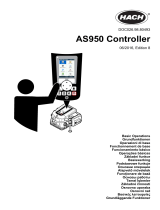 Hach AS950 Basic Operations
Hach AS950 Basic Operations
-
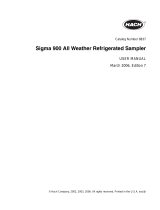 Hach SIGMA 900 Manuale utente
Hach SIGMA 900 Manuale utente
-
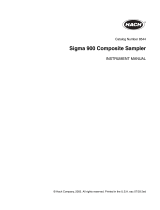 Hach 900 Manuale utente
Hach 900 Manuale utente
-
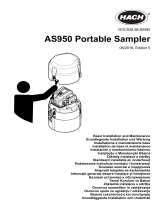 Hach AS950 AWRS Basic Installation And Maintenance
Hach AS950 AWRS Basic Installation And Maintenance
-
Hach TU5300sc Quick Manual
-
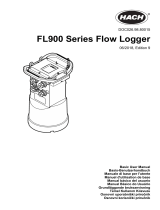 Hach FL902 Basic User Manual
Hach FL902 Basic User Manual
-
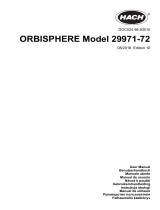 Hach 29971-72 Manuale utente
Hach 29971-72 Manuale utente
-
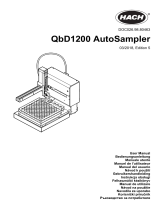 Hach QbD1200 AutoSampler Manuale utente
Hach QbD1200 AutoSampler Manuale utente
-
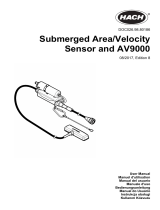 Hach AV9000S Manuale utente
Hach AV9000S Manuale utente
-
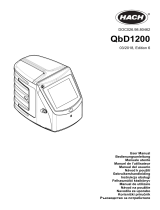 Hach QbD1200 AutoSampler Manuale utente
Hach QbD1200 AutoSampler Manuale utente
Altri documenti
-
Omega SWS-201 Manuale del proprietario
-
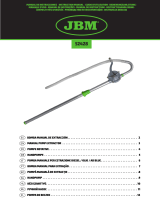 JBM 52428 Guida utente
JBM 52428 Guida utente
-
Varian Saturn 2000 GC/MS Manuale utente
-
Goodwe Smart meter Manuale utente
-
ProfiCook PC-EOS 1270 Istruzioni per l'uso
-
Master DHA 160 Manuale del proprietario
-
Brandson 306234 Manuale del proprietario
-
Honeywell BWTM Ultra Portable Five Gas Detector Guida utente









































































































































































































































































































































































































































































































